Reading Time: 11 Minutes
Banners, web forms, and email campaigns—proven tools marketers use daily. And they worked perfectly until recently. Customers admit that a “web form ⟶ CRM ⟶ follow-up emails ⟶ qualification call ⟶ sales call” funnel is cold, impersonal, and too long.
That’s why today we’ve seen:
The fix? Stop being silent. Be the first who starts a dialog. 70% of customers expect that from brands globally. And in this article, you’ll find five conversational marketing strategies to engage website visitors and grow conversions on autopilot.
Let’s start with the definition.
Conversational marketing is a customer engagement strategy that implies personalized real-time dialog with website visitors via messaging.
Opposite to traditional marketing that puts the company’s interests first, the conversational approach prioritizes customers. Let’s compare the two:
| Traditional marketing | Conversational marketing |
| A company treats all people as leads and prospects. | Each lead is treated like a person. |
| Customers follow the company rules. | Customers make orders on their terms and timeline. |
| Customers receive random, irrelevant emails. | Businesses tailor all messages to their subscribers’ individual needs. |
| Website visitors get a generic experience that has nothing to do with their needs. | Visitors enjoy personalized website experiences. |
| It takes website visitors too long to find the necessary information. | Website visitors get help instantly on their preferred channel. |
The best practices of email marketing, web forms, and pop-up messages aim to drive sales, lead generation, and engage customers, as well as conversational chatbots, live chat, and surveys.
But the last ones work much better for both ecommerce and SaaS marketing. For example, imagine Kate—a potential customer who wants your tools’ demo. Let’s have a look at two scenarios.
Step 1: Kate fills out a web form.
Step 2: Within a week or two, she gets lead nurturing emails.
Step 3: A company rep who has to pre-qualify all the incoming requests finds time to call her.
Step 4: Kate finally has her demo call with a sales manager.
Time to demo: Up to one month
Result: Tired customers and managers and a high level of burnout
Step 1: Kate starts a chatbot conversation and answers a few questions.
Step 2: The chatbot quickly qualifies her as a hot lead and offers to schedule a demo.
Step 3: A sales rep gets notified and conducts a demo call with Kate.
Time to demo: About 1 hour
Result: Happy customers, happy team
It’s only one of the examples of how conversational marketing can boost your customer engagement. Continue reading to find more eCommerce scenarios.
A free template, guide, discount, opportunity to earn money as an affiliate, or an ebook is a holy grail for customers and marketers. The former are happy to save money on valuable content or offers, and the latter enjoy a growing email list.
Companies use lead magnets to capture website visitors’ attention (and contacts) on the main page, product pages, blog, or dedicated landing pages. But the main question is how they capture more inbound leads. Usually, it is a pop-up message or a lead capture form that works for all website visitors.
For example, there is a common practice to show a lead capture pop-up immediately upon a visit to all potential customers. Usually, it has an excellent design and offer, but there is problem:
Look at the better alternative. This is an example of a chatbot script that launches when a customer is ready to talk:

During a short conversation, it offers your visitors a good deal and asks for an email to send the discount code. The offers may vary: free shipping, affiliate program, etc. The main thing here is the format—a chatbot is more oriented on customers’ needs and launches at the right moment. For example, when visitors try to leave your website.
What are the most popular ways to provide customer assistance on ecommerce websites? It’s easy—FAQ and phone support number.
But there’s a problem: Only some people want a phone conversation, and there are better ways to lead a customer to a purchase than FAQs.
That’s why, in addition to that, e-stores provide visitors with the opportunity to chat with a manager. On some websites, you can see a welcome message engaging consumers to start a chat:
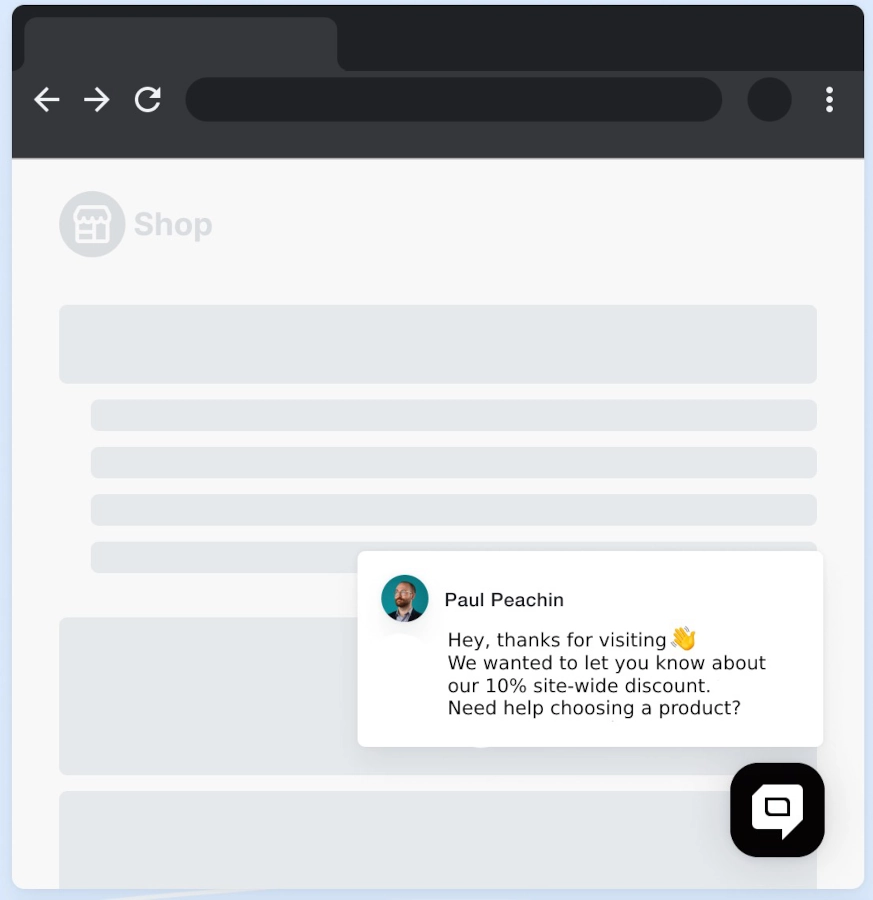
Image via HelpCrunch
Live chat with a welcome message is a great way to engage customers in a conversation, help them, and lead to a purchase.
On social media, we can see influencer marketing that recommends us products. On ecommerce websites, this function goes to relevant banners and pop-ups. It is a fantastic way to provide the best customer experience and help people find the needed item faster. Additionally, it’s a proven way to turn prospects into clients who seek out product recommendations.
You definitely saw that “You may also like” items recommendation on the product page, cart, or checkout. Usually, there are complementary products or similar items. So what’s the problem?
1. Banner blindness: People ignore banners on autopilot.
2. Quite often, due to the weak personalization and tech solution, such product recommendations are irrelevant to customers’ interests.
The fix? Just ask what your visitors want. Sephora beauty store did a great job helping potential customers find the right items. The first option is product quizzes:

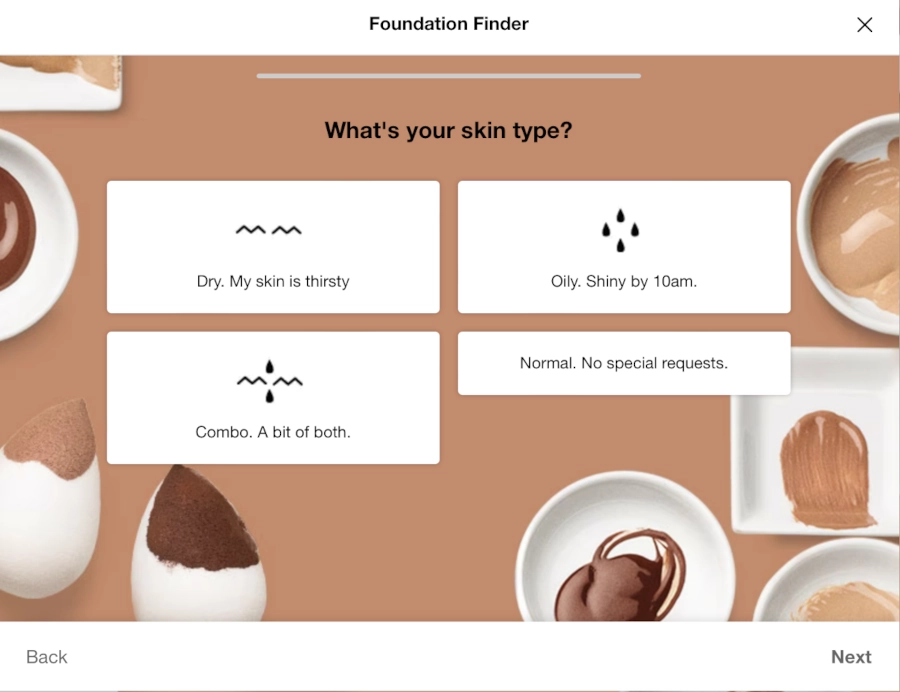
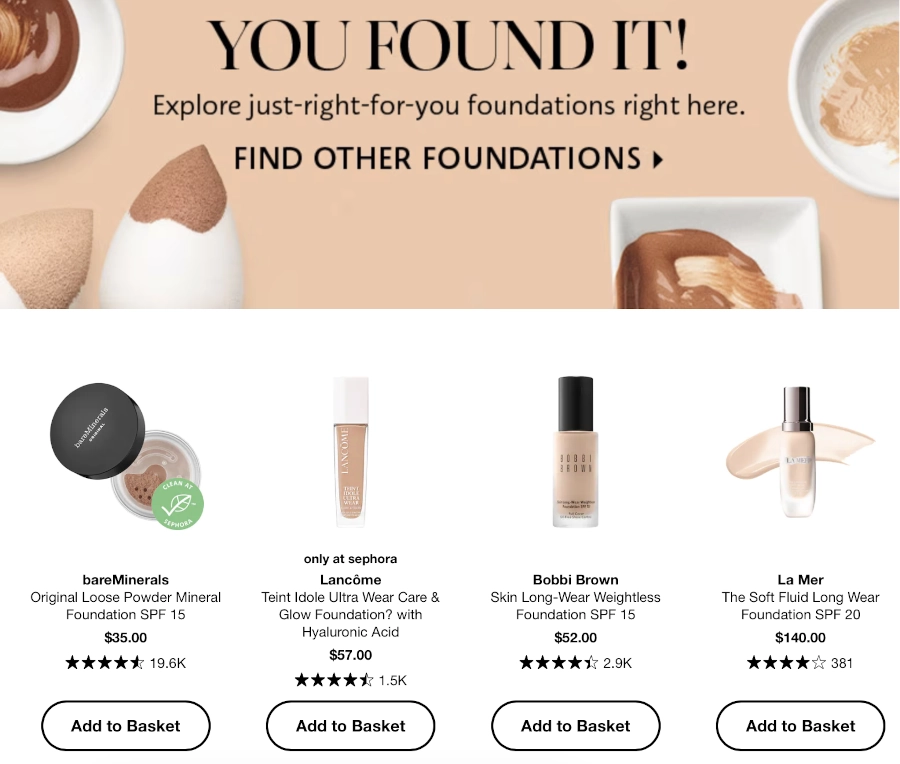
Images via Sephora
Website visitors answer five questions about their skin type and get a list of products that best fit their requests. Magic!
In addition to that, Sephora’s Facebook followers can enjoy the shade-matching chatbot. It helps users find a lip color that matches the color in an image uploaded. Moreover, they can try it on.
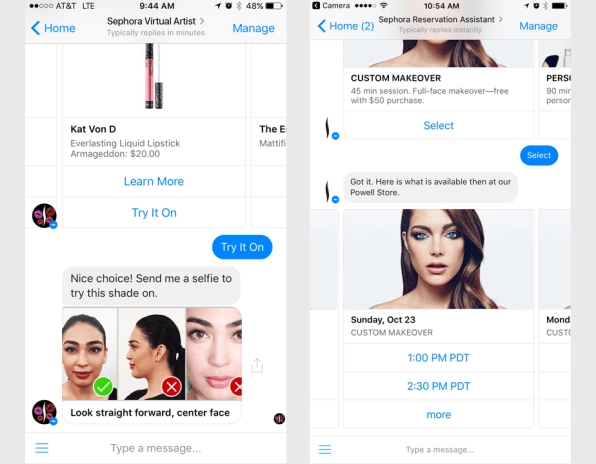
Customer feedback is an excellent opportunity to improve customer service and get valuable reviews. Usually, to get that information after purchase, online stores send “How much would you rate your shopping experience/product, on a scale of 1 to 10?” emails.
Unfortunately, most of them end up ignored. So how can you encourage customers to share their thoughts?
Try the Short Message Service (SMS) chatbot instead. This is an example of an AI chatbot technology that chats with your customers and asks them to leave a review:
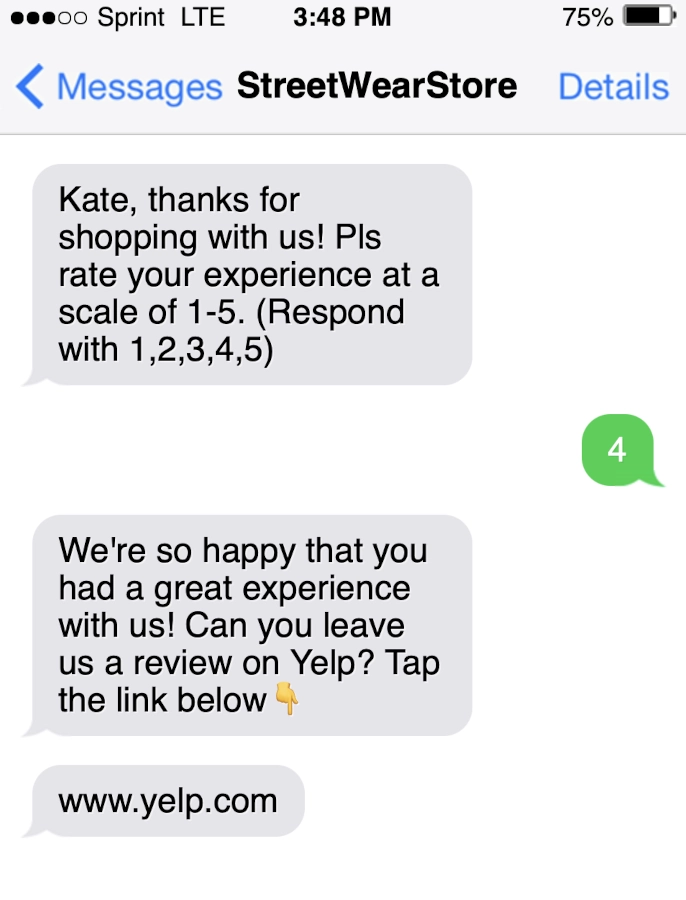
And if you want to take the next step and make sure you get valuable feedback from your customers, it can be a good idea to rely on IVR solutions so that people can share their thoughts when contacting your business. For instance, you can add your business phone number in the website footer and then redirect customers who are ready to share their feedback to the right representatives and record this data.
One of the most popular strategies to drive sales is to send a follow-up email with products relevant to customers’ interests just after they place an order. Usually, there is a list of complementary products with discounts and BUY buttons leading subscribers to a website.
But there is a customer journey issue: Emails feel impersonal and force you to leave the website and visit an inbox.
Instead, try to engage customers right on a website. For instance, launch a chatbot on the product page for visitors that added it to a cart:
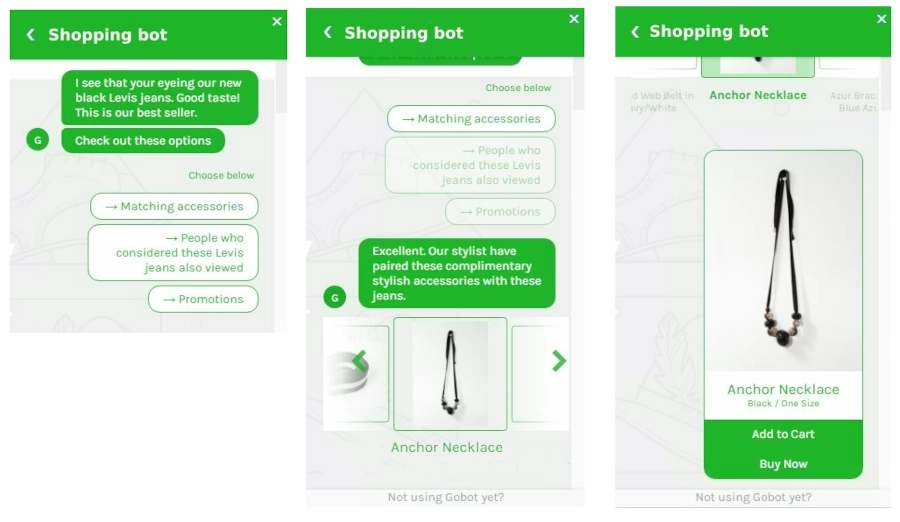
Image via LoyaltyLion
Among other options, such a chatbot recommends your customers’ complementary offerings with an opportunity to add them to a cart. Thus, there is no need to leave the website to continue shopping.
Conversational marketing is a great way to engage customers. Customers want more than silent lead forms, emails, or pop-ups. They want to talk with brands, explain their needs, and get a personalized experience.
So provide it. To launch a conversational marketing campaign, follow the next steps:
Conversational marketing can become a powerful part of your marketing operations, but only if integrated into your existing strategy without causing friction.
Are you ready to stake your claim in the creator economy? Discover more helpful tips and resources from the experts at GRIN: Creator Management Learning Center
Our team keeps a finger on the pulse, so you’re always working with the latest information.